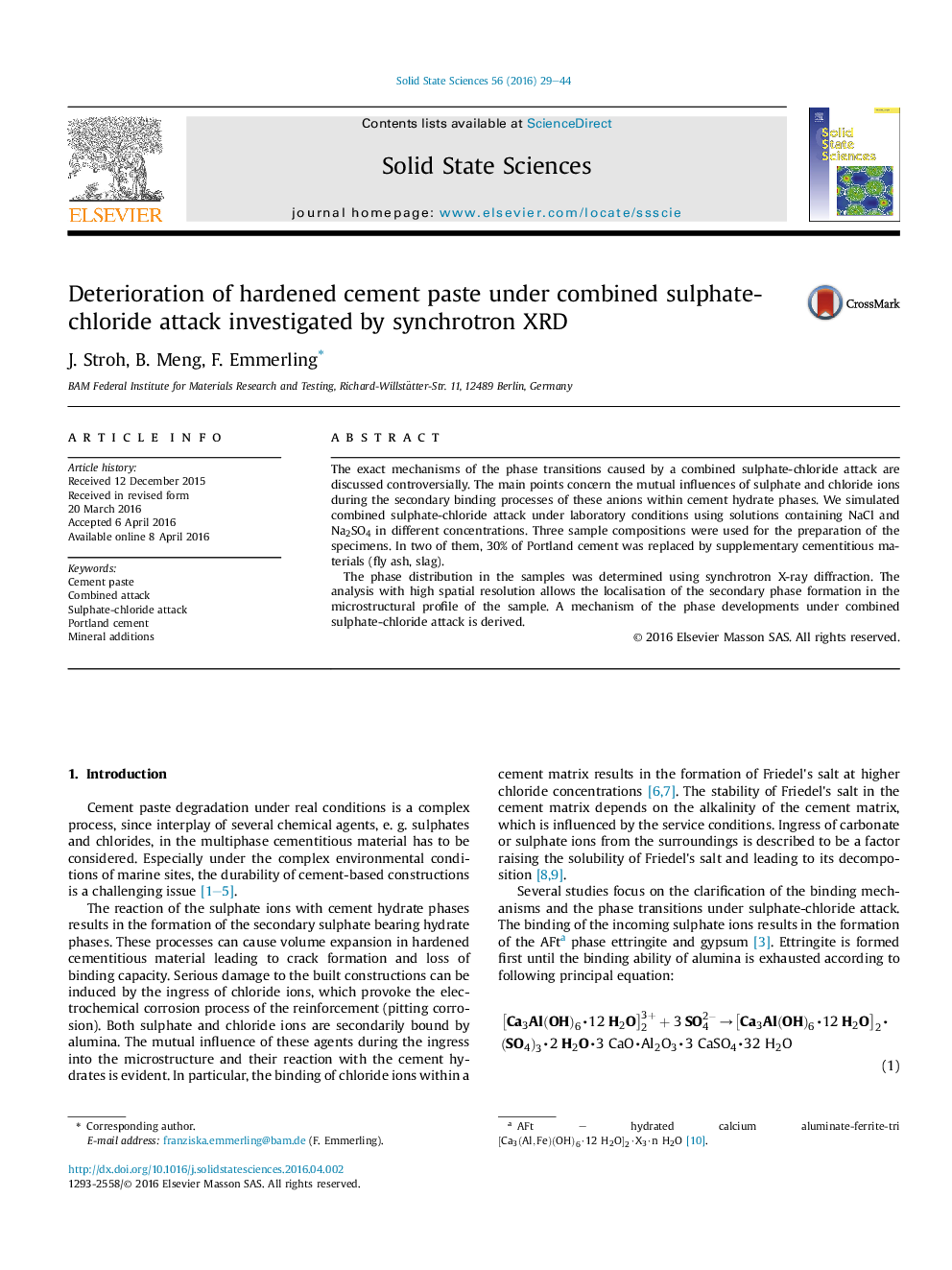| کد مقاله | کد نشریه | سال انتشار | مقاله انگلیسی | نسخه تمام متن |
|---|---|---|---|---|
| 1504002 | 1510966 | 2016 | 16 صفحه PDF | دانلود رایگان |

• SyXRD was applied on the cement samples after combined sulphate-chloride attack.
• Investigated samples consist of Portland cement and SCM (fly ash, slag).
• Chloride ions penetrate fast and are bound by alumina.
• Sulphate ions participate first in the formation of gypsum.
• Excess sulphate ions form ettringite.
The exact mechanisms of the phase transitions caused by a combined sulphate-chloride attack are discussed controversially. The main points concern the mutual influences of sulphate and chloride ions during the secondary binding processes of these anions within cement hydrate phases. We simulated combined sulphate-chloride attack under laboratory conditions using solutions containing NaCl and Na2SO4 in different concentrations. Three sample compositions were used for the preparation of the specimens. In two of them, 30% of Portland cement was replaced by supplementary cementitious materials (fly ash, slag).The phase distribution in the samples was determined using synchrotron X-ray diffraction. The analysis with high spatial resolution allows the localisation of the secondary phase formation in the microstructural profile of the sample. A mechanism of the phase developments under combined sulphate-chloride attack is derived.
Figure optionsDownload as PowerPoint slide
Journal: Solid State Sciences - Volume 56, June 2016, Pages 29–44